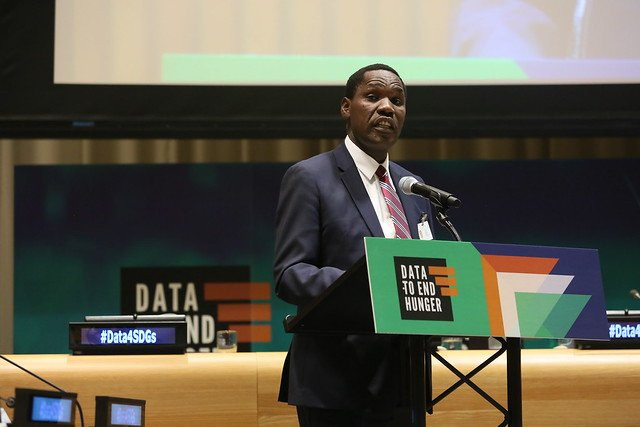Ending Africa’s Agriculture Data Drought

The Challenge
The United Nations General Assembly (UNGA) draws heads of state and hundreds of ministers and other high-level national officials—not to mention UN leaders and Oscar-winning actors. With countless closed-door meetings, panel discussions, major announcements and official UN sessions, UNGA makes Turtle Bay in New York the most powerful place in the world.
Many of the organizations we work with understandably view UNGA as one of the most important events of the year. It provides them with an invaluable opportunity to draw the attention of decision-makers and donors to their cause.
The only problem is, with so many organizations clamouring for attention, it’s difficult to get noticed. Probably the most difficult people to reach during UNGA are New York-based reporters who cover the UN and global issues—and the small handful of reporters who fly in from elsewhere to cover UNGA.
While the UN press pool is large, many reporters with this beat cover the official proceedings rather than side events or other non-official proceedings. This leaves a small window of opportunity for media coverage for any given event, no matter how high-level.
Our Approach
The Global Partnership for Sustainable Development Data (GPSDD) asked us to generate media interest in their official UNGA side event announcing an ambitious new effort to harness the power of data to boost the productivity and income of the world’s 500 million small-holder farmers.
The “50 x 2030” initiative would conduct regular surveys of farming households in 50 low- and lower-middle-income countries by 2030—and then make the data, combined with other information sources, widely available.
Basic agricultural data—such as the different crop varieties farmers are planting, how much they are harvesting, and their access to inputs and financing—are often missing in developing countries. But these insights can have a big impact on productivity and incomes.
We emphasized the most newsworthy elements in a media advisory and press release that we shared with dozens of reporters covering UNGA. But we didn’t limit our outreach to New York-based journalists. We reached out to reporters covering international development, agriculture and data worldwide, with an emphasis on Europe and Africa. We also asked the London-based head of GPSDD, Claire Melamed, to make room on her calendar for potential one-on-one meetings with reporters based there before she flew to New York.
Results
The media coverage we generated elevated the data for hunger issue above the noise of UNGA. Coverage resulted in Nature, Telegraph, Quartz, Reuters, SciDev.Net, Telesur, Inter Press Service, Xinhua, Ghana News Agency and other outlets. Once this initial wave of coverage landed, other reporters came calling, eager to learn more about the event. The 50 x 2030 initiative has since been mentioned in blog posts of partner institutions.